
Macadamia Nut ‘Cheese’
Before my massive lifestyle changes, I was never a great fan of regular cheese. Yeah I used to eat it, but it wasn’t a necessity. Obviously my pizza’s back in the day used to be laced with the stuff, but other than that, I didn’t really consume much of the stuff. I did, however, love feta cheese. I think it’s something about the saltiness and the texture that really turned my taste buds on. Only recently have I made the decision to stop eating it, purely for the fact that it, like other cheese, is pretty much rot. Yup, no more feta for me please and thank you!

Luckily, there is an alternative for all those feta loving health nuts out there. Macadamia nut ‘cheese’. Yes, a crumbly ‘cheese like textured’ creation, that flaunts an array of flavors, and is quite versatile too.
So there is a bit of prep work required for this cheese, but the result is fantastic and so yummy. It really is worth it. Let’s first see why macadamia nuts are so good for you.
Macadamia nuts are the most fattiest of all the nuts, knowing this you’d expect them to be the unhealthiest, although they quite the opposite. The majority of fats in macadamias is in the form of monounsaturated fatty acids, and these types of fats are good for the cardiovascular system, making them heart healthy. Now, like most nuts, these should be enjoyed in moderation, as they do contain around 200 calories per 30 grams.
Macadamia nuts are a good source of key nutrients, including magnesium, calcium, iron, copper, chromium, manganese and zinc. They are also full of fiber, which is great for keeping our bowls happy and working efficiently.
So yes, they are a high fat food, but it’s a good fat. So keep it in mind, and limit indulgence with this tasty ‘cheese’.
As cheese is a fermented food, we want to add that element into this creation, and we do that by allowing the nuts to ‘ferment’ overnight with some live cultures. Now in this instance I used digestive enzymes. Preferably you’ll want to use a plant based/vegan brand. The enzymes in the tablet will help to break down the cell walls of the nut, and hence ‘fermenting’ it in a sense. Such fun!
So like I said before, a bit of prep work is required. The nuts will need to soak overnight and the enzyme nut mix needs to stand overnight, in a warm environment to allow maximum breakdown of the cell walls. So two days are needed prior to making the ‘cheese’. If you can’t soak overnight, 6 hrs should be sufficient.
Ingredients
- 2-3 Digestive Enzyme Capsules
- 1 1/2 Cups Raw Macadamia Nuts ( soaked overnight and rinsed)
- 4 TBS Nutritional Yeast
- Pink Himalayan Rock Salt
- Ground Black Pepper
- Chilli Flakes
- Mixed Herbs
- Fresh Herbs (of your choice, I added a bit of fresh basil and fresh rosemary) (finely chopped)
- Plastic Cling Wrap (for molding)
Recipe
First you’ll want to soak your macadamia nuts over night. Rinse them thoroughly the next day.
In a high speed food processor, blitz the nuts until they are the texture in the photo below. Imagine crumbled feta cheese. You want them that kind of texture. Place the mixture into a glass or ceramic bowl, and crack open the digestive enzyme tablets over it. Mix thoroughly, and leave covered with a dish towel in a medium temperature room. Not cold, but not too warm. Leave overnight.
Now it’s time to flavor your ‘cheese’. Add the remaining ingredients to the bowl, and you really can pick and choose what you like. If you are not much of a fan of chilli flakes, leave them out and add something else. I like the little spurts of heat they give. You can add all different types of herbs, and can even separate the plain mixture, and make different variations of flavor. This recipe is versatile, so you add what suits you.
The nutritional yeast not only adds a B vitamin boost, but also adds the cheesy taste, which combines lovely with the other flavors.
Once mixed you want to lay the mixture out onto the center of the cling wrap. Carefully fold the mixture into a sausage, ensuring it is tightly compacted. Twist each sides until you create a tight, firm ‘cheese’ sausage shape.
Allow this to cool in the fridge for about and hour or two.
Cut into slices and serve with gluten free crackers or my tasty Mixed Seed Crackers
// Don’t forget to leave a comment below if you enjoyed this recipe //


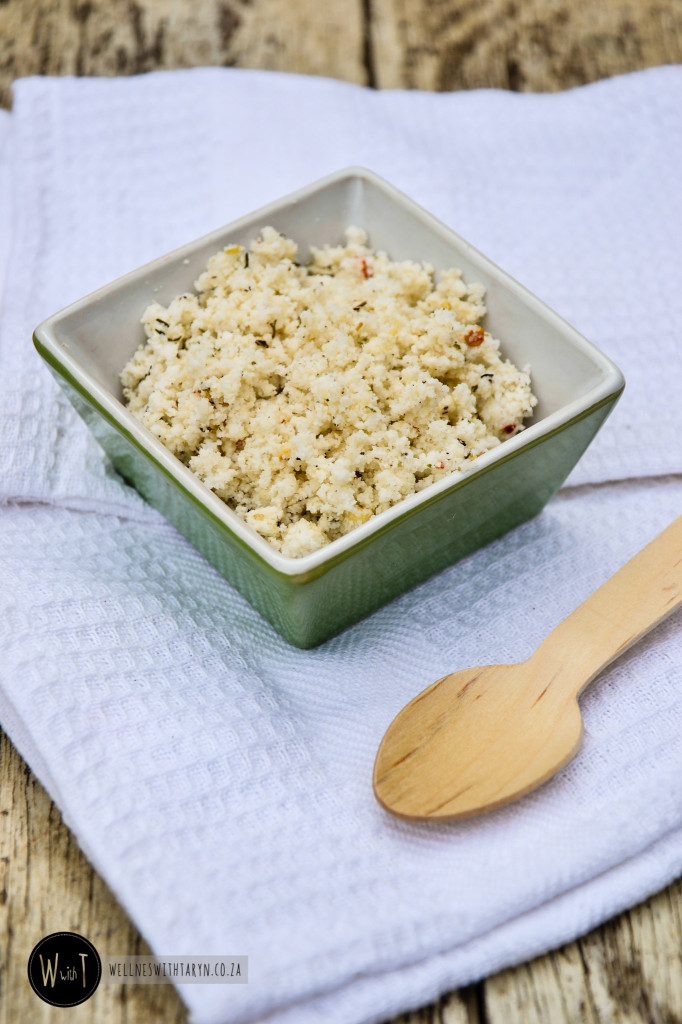
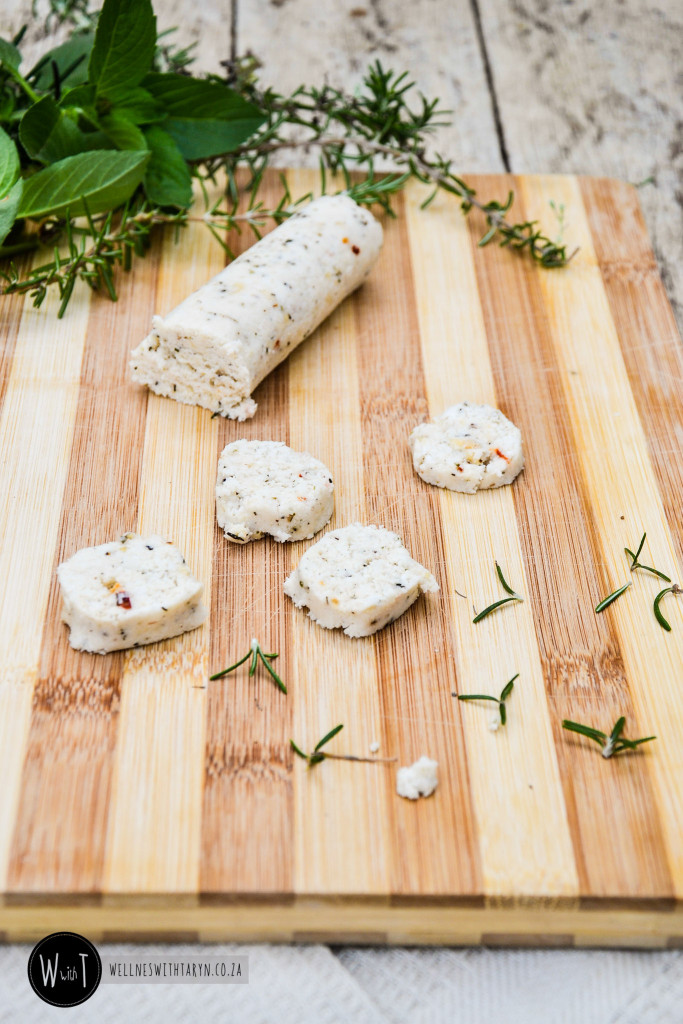


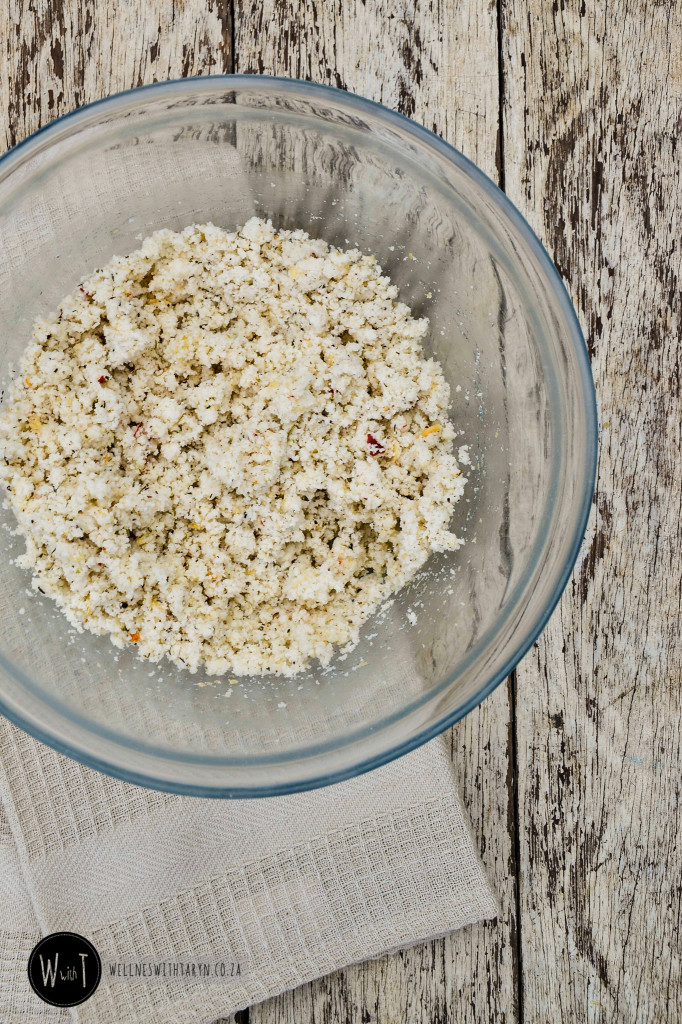
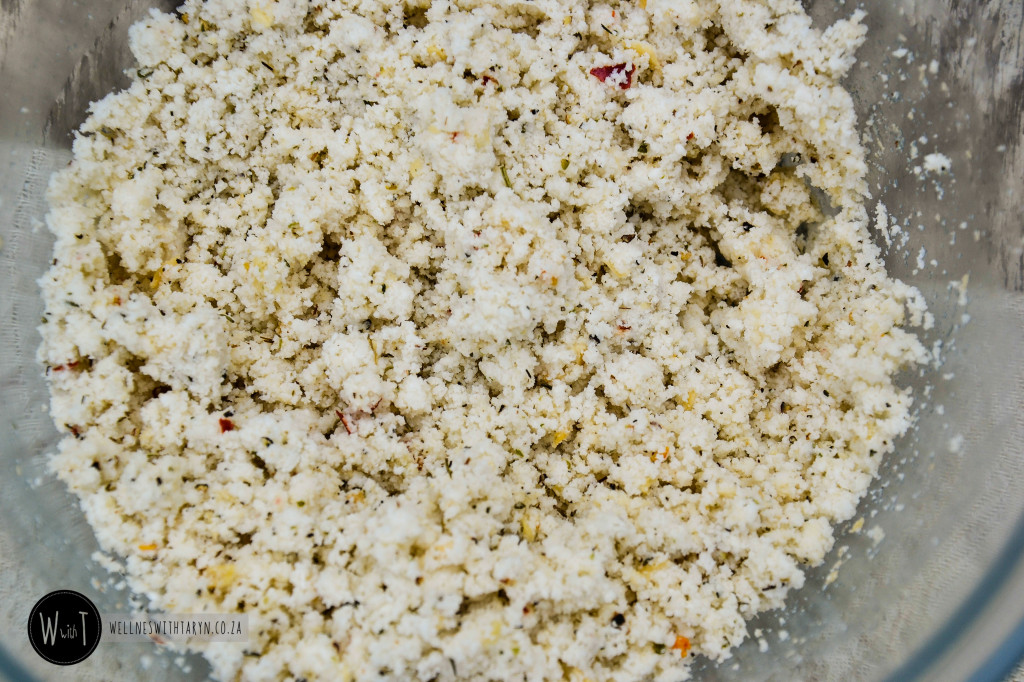
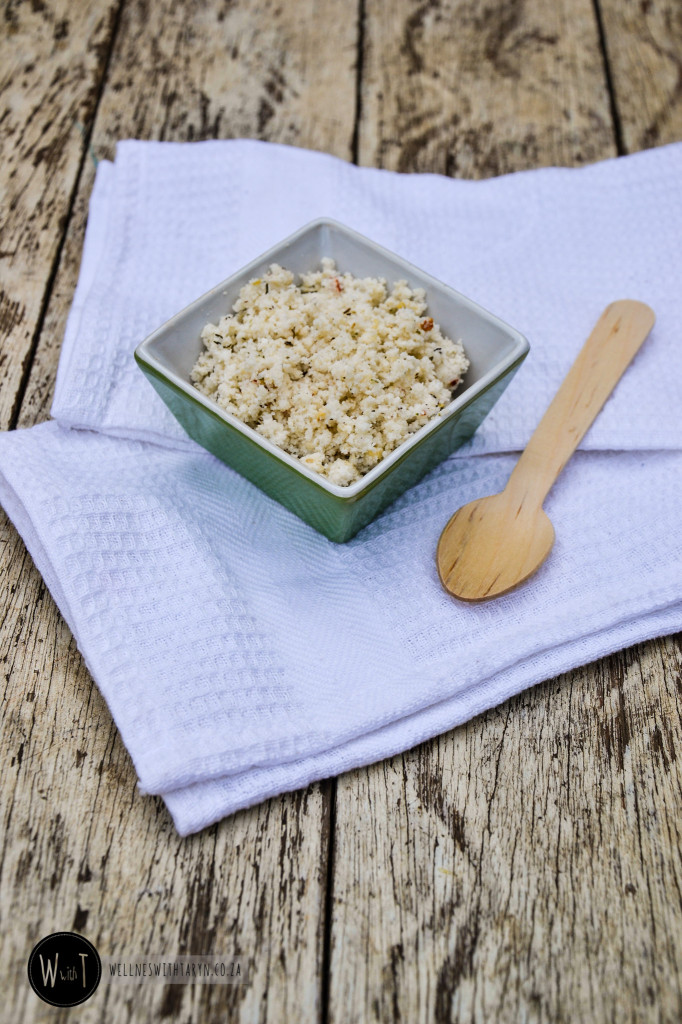
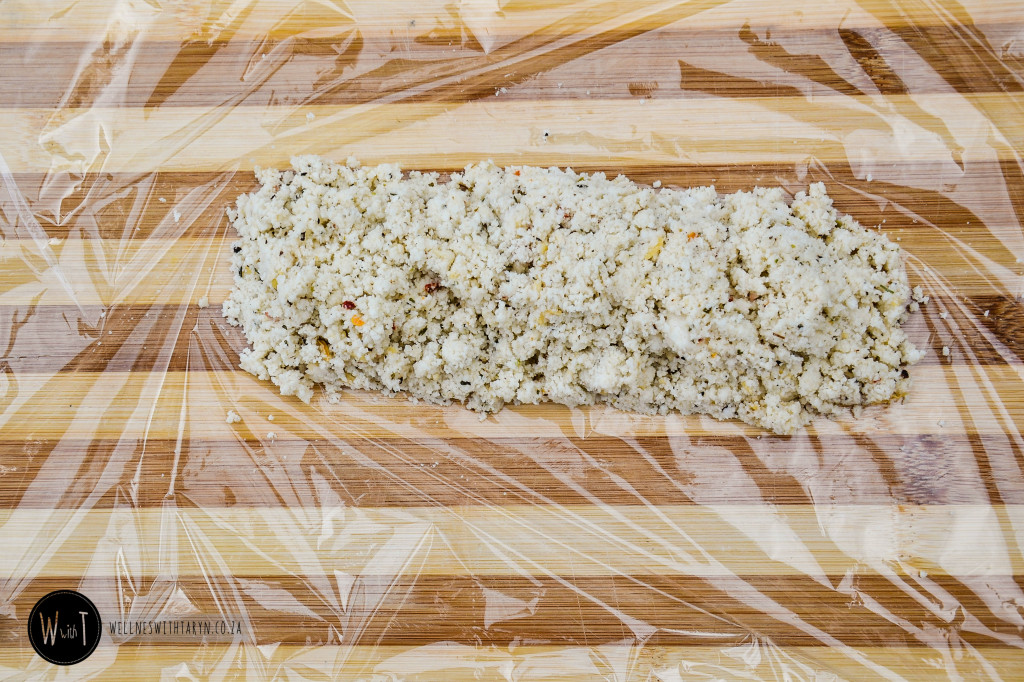
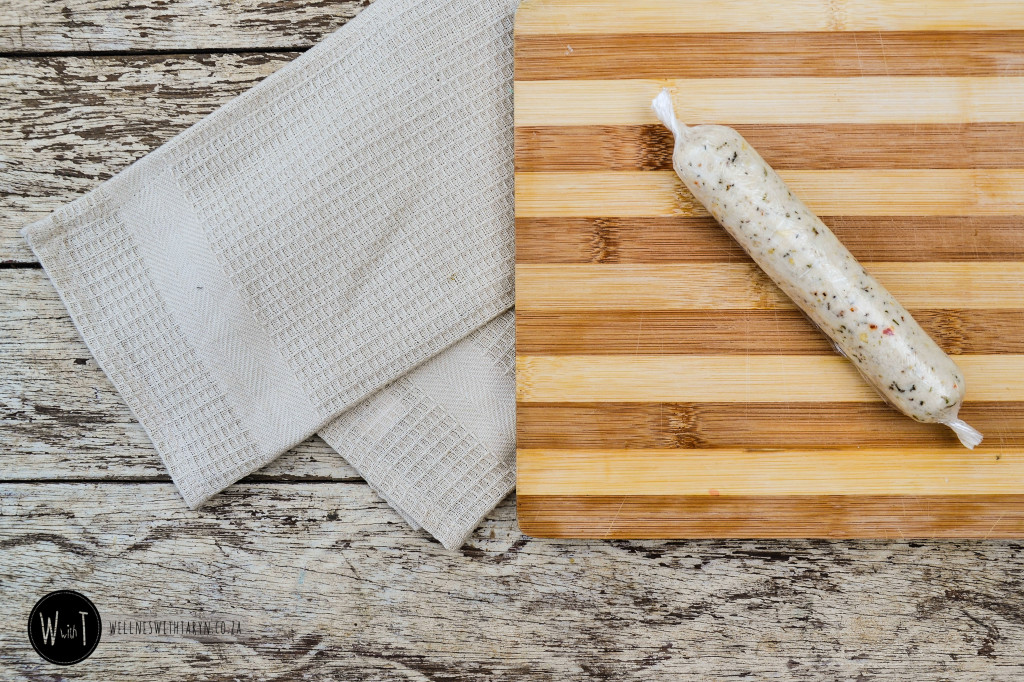
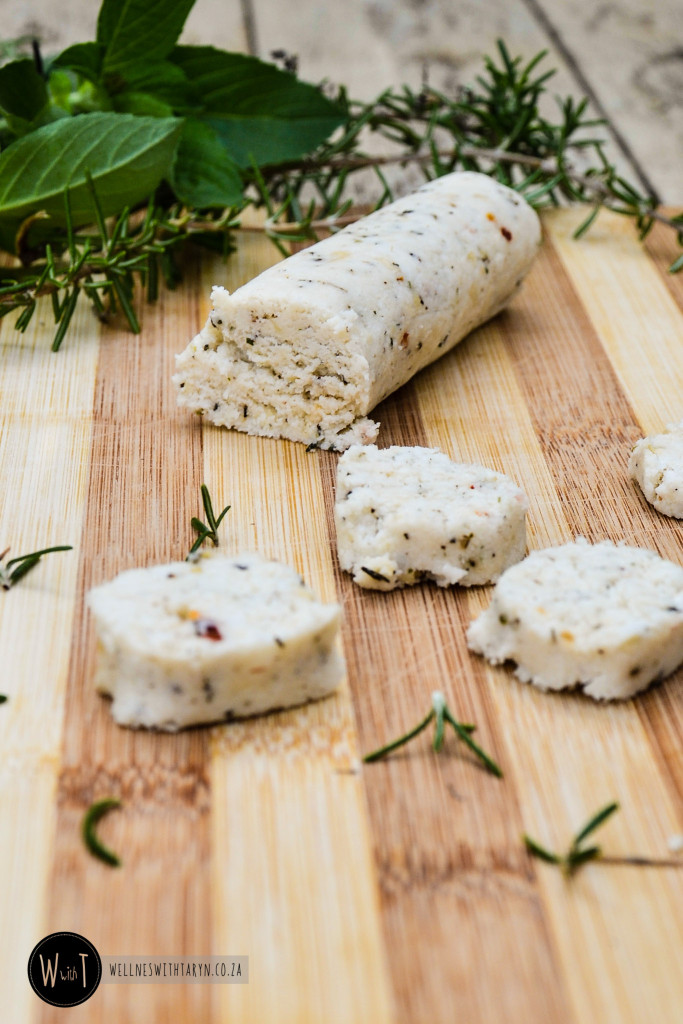
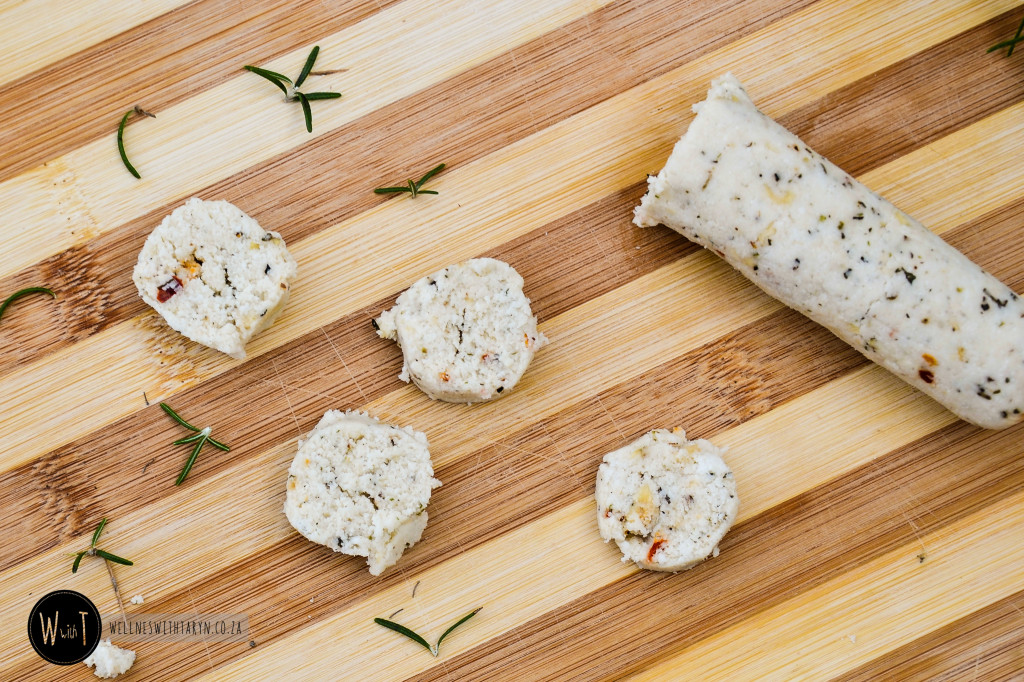

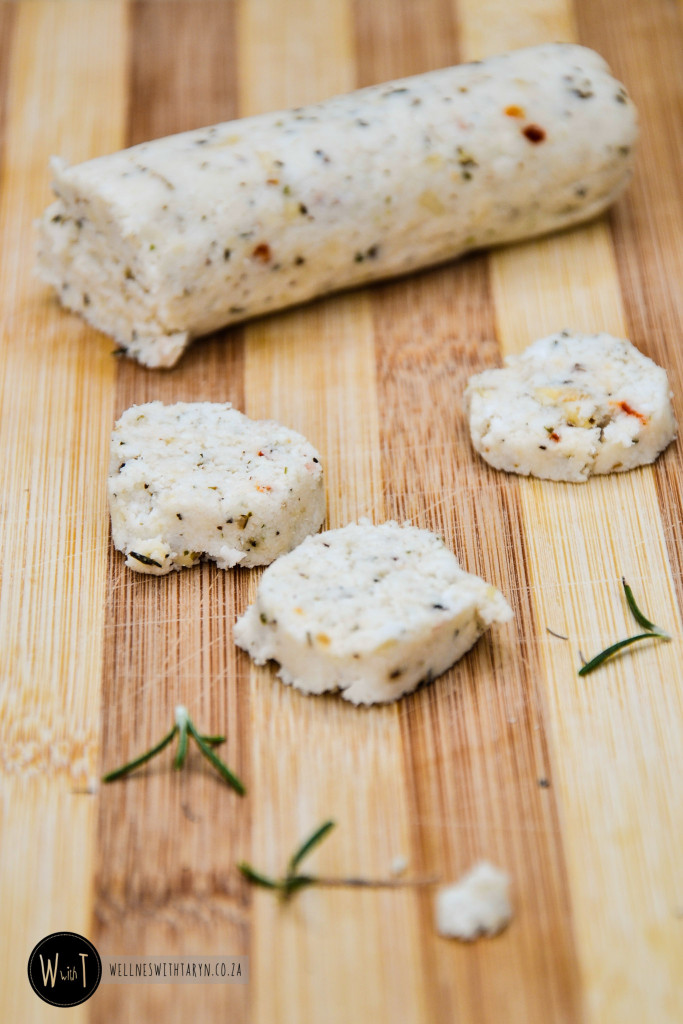


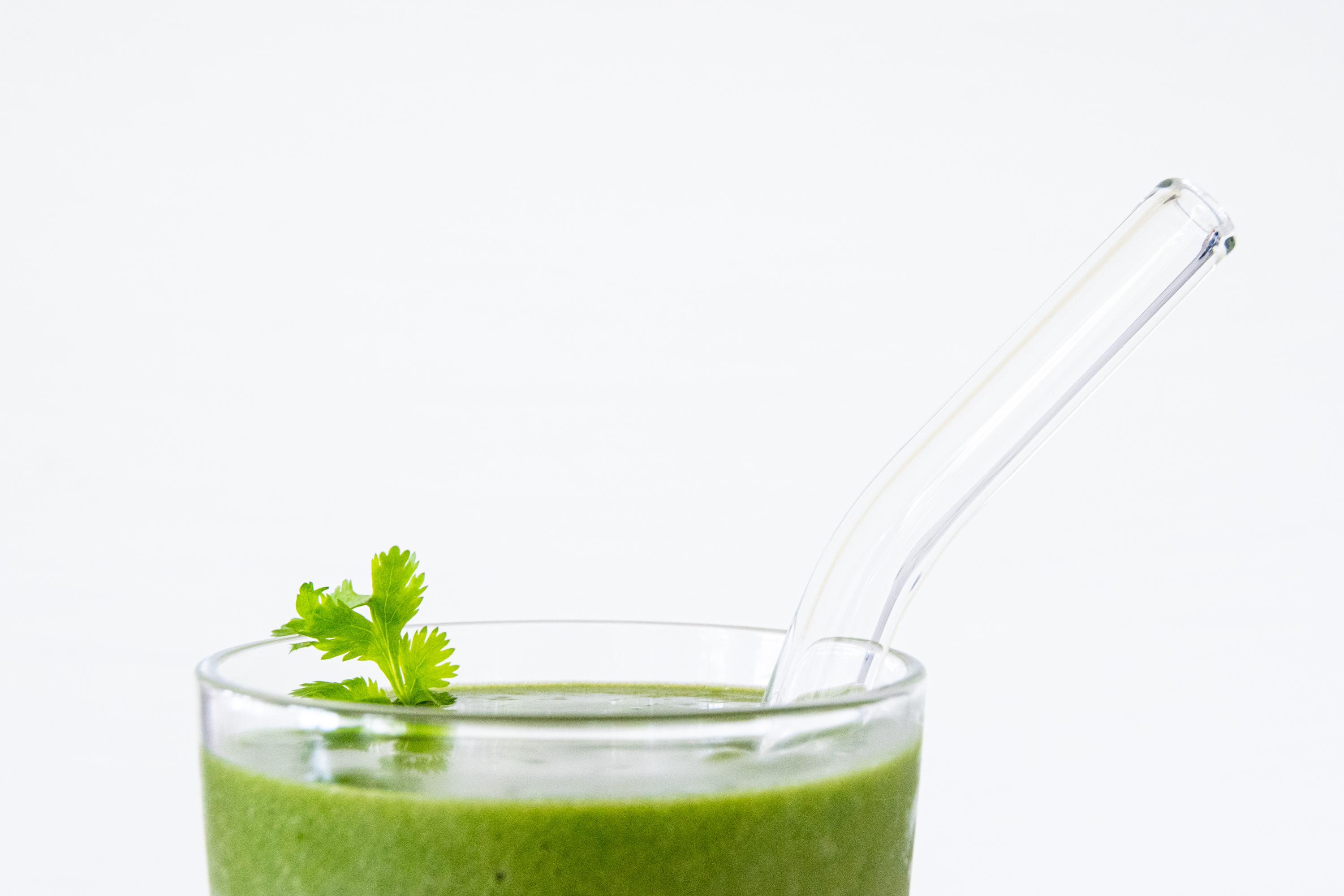
16 Comments
kirsty
I had the pleasure of tasting this, and my golly it was amazing!!!! you should definatley give it a try !
taryn
Thank you so much my friend! So glad you enjoyed it 🙂
Kathy Patalsky
LOVE this. I am so into vegan cheeses lately! Would love to see you submit this to FindingVegan.com so I can share it with our fans! (We have over 400,000 on Facebook!)
taryn
Oh wow Kathy! So glad you like it. I would love to share it! It’s all about spreading the wellness 🙂
Emma
Great photos! I’m curious about digestive enzymes, as I haven’t use them before. Are they easy to get and/or affordable? Where can I get them? Thanks! Love to try this!
taryn
Hi Emma
Thanks so much for your comment 🙂
Digestive enzymes, such as lipase and lactase, are proteins that break food down into digestible nutrients that can be absorbed and utilized by the body. They work by breaking down macro-molecules into smaller, more readily absorbed nutrients. They are found in the gastrointestinal tract; including in the saliva, the stomach acid, the pancreatic juice and the body’s intestinal secretions. They are quite affordable. I found a link to a site that sells them near you:
http://www.vitaminshoppe.com/p/digestive-enzymes-90-veggie-caps/vs-2587#.VLRacSuUfow
Take care and let me know how it goes.
Xxx
Dorothy
Do you think I could use raw cashews for this cheese?
taryn
Hi Dorothy
You can most definitely try. I haven’t experimented with cashew nut cheese, but I’m sure it would taste delicious. I’ve seen a lot of other vegan cheese’s that are made from cashew nuts. My suggestion would be if you want your cheese a crumbly texture, similar to feta, don’t blitz the cashews to much. Alternatively if you want your cheese to be quite smooth in texture, then blend the cashew for longer. Just play around to your specific taste.
Let me know how it turns out if you do 🙂
Xxx
Daphne
Do you think probiotics will work here instead of Digestive enzymes?
taryn
Hi Daphne
I have been wondering the same, as I see that plant based digestive enzymes aren’t that easy to come by. You could most definitely try. I presume the outcome would be similar. Only one way to find out 🙂
If you do give it a go, let me know how it turns out 🙂
Xxx
Clare
Thanks for this recipe – I saw it on Facebook, shared by Finding Vegan 🙂
I’m neither vegan nor vegetarian, but always looking for new foods to try and this recipe sounds great. But, not being vege/vegan, can you tell me what nutritional yeast is? Is it like marmite – indeed, could marmite be used for the recipe? If not, how difficult is nutritional yeast to come by?
My husband and I are big cheese fans (as in, so much so, our wedding ‘cake’ was a stack of cheeses!) but I get that not everyone is and think this recipe is a great way to enjoy both worlds!
Thank you – I’ve now bookmarked your website too!
Clare
taryn
Hi Clare
Thanks so much for your comment 🙂 I’m so glad you’re excited to try the recipe.
So, nutritional yeast is not the same as baking yeast, active dry yeast, or brewer’s yeast. It is a yellow, flakey, cheesy inactive yeast. It is so versatile and can be used as a salad sprinkle, to a delicious cauliflower no-cheese bake. It can be found at most health stores and some bulk food stores. It is also known as ‘savory yeast’ and ‘savory yeast flakes’. So, it’s not like marmite and I wouldn’t used marmite in this recipe, although nutritional yeast is also jam packed with B vitamins and a vegetarian source of B12. It is also high in protein and fiber and is a great source of folic acid.
Definitely worth having this ingredient in your pantry 🙂
Your wedding cake sounds lovely!
Thanks for bookmarking the site, I’ll keep the recipes coming 🙂
Take care
Xxx
Joy
This sounds so delicious, I can’t wait to try. My plan is to soak the nuts during the day while I am at work (>8 hours) and then I can let the digestive enzymes work overnight, so it would really just be a 1.5 day process.
taryn
Hi Joy
Thank you for your comment 🙂
Your plan sounds good! Let me know how it goes.
Xxx
Diane
What do the digestive enzymes do? Thanks
Taryn
Hi Diane
Thanks for your comment. Digestive enzymes, such as lipase and lactase, are proteins that break food down into digestible nutrients that can be absorbed and utilized by the body. They work by breaking down macro-molecules into smaller, more readily absorbed nutrients. They are found in the gastrointestinal tract; including in the saliva, the stomach acid, the pancreatic juice and the body’s intestinal secretions. Lactase from fungi, Bromelain from pineapple, and Papain from papaya are some plant based options.
Hope this helps.
Taryn